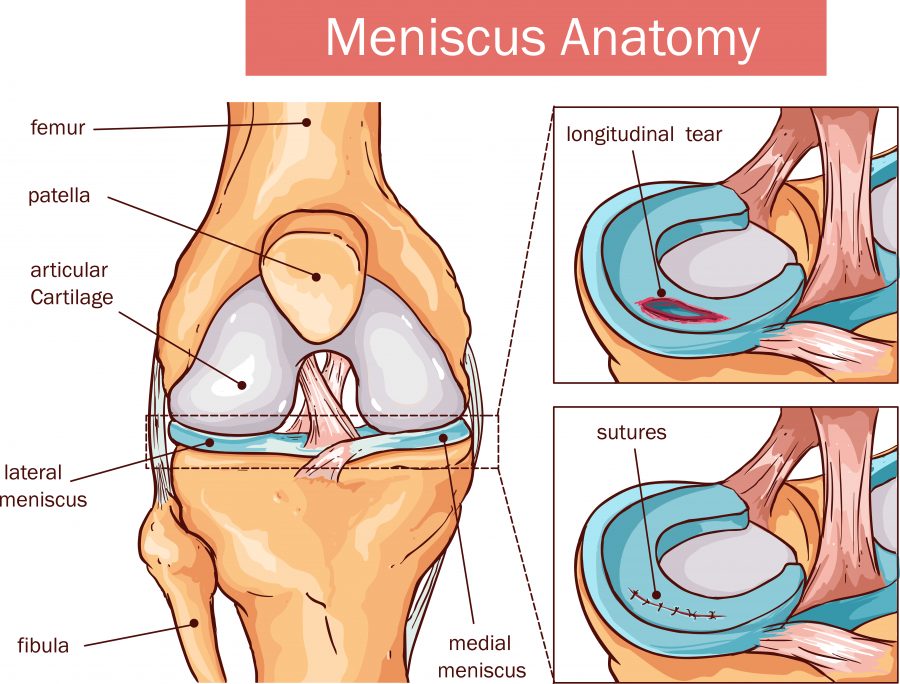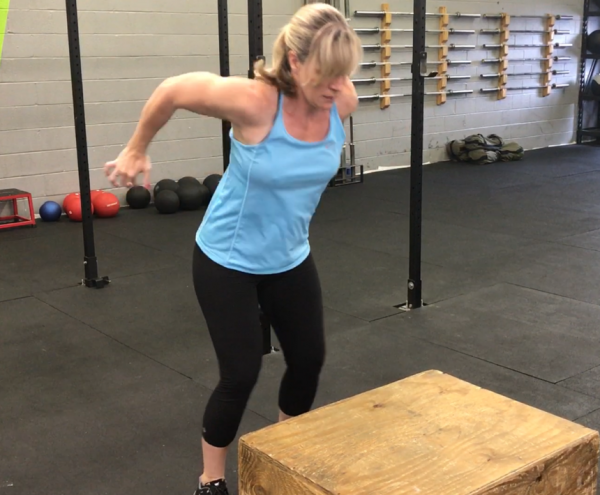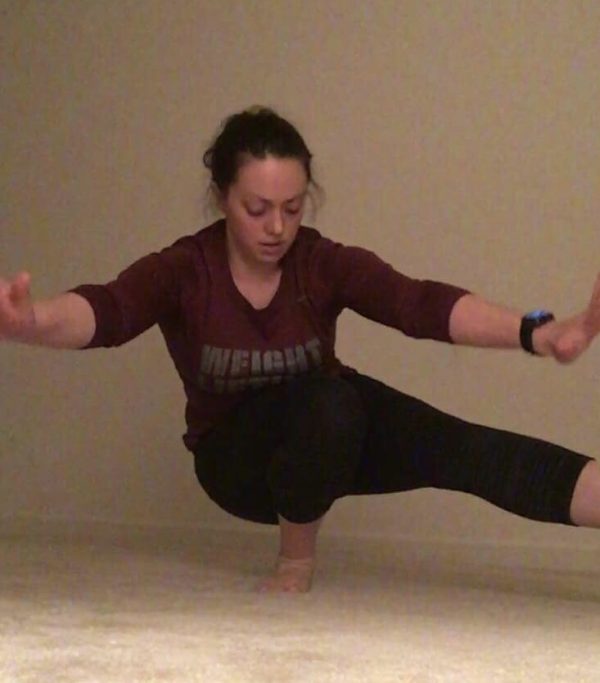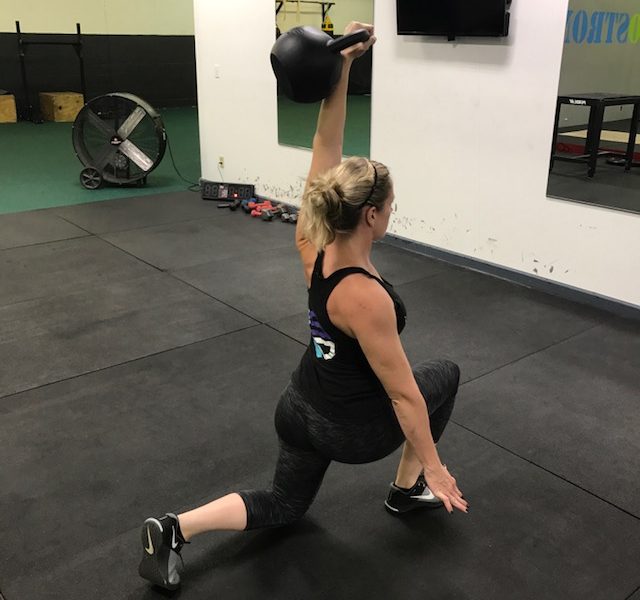Meniscus Tears During HIIT Workouts
There have been a lot of knee injuries in competitive fitness athletes recently. Meniscal tears have sidelined many pros before The Open even started. So I thought it would be a great time to discuss the most common knee injury: meniscus tears. Meniscus tears are super common in all sports. And High-Intensity Interval Training (HIIT) is no exception. Common HIIT exercises like box jumps can cause meniscus tears. But squats can also cause meniscus tears if done incorrectly! But in this article, I’ll tell you all about the meniscus. You’ll learn what the meniscus is, how it can be injured, how we treat them, and how to prevent them.
Can I Tear My Meniscus in The Gym?
Whenever I see someone with knee pain, they are almost always worried about their meniscus. And with good reason; a meniscus tear is just about the most common knee injury that orthopedic surgeons deal with. Over 750,000 people in the US have knee scopes for meniscus tears every year! But don’t worry, you are far more likely to tear your meniscus playing soccer or basketball than during HIIT training. (Check out our prior post for more details.) But HIIT workouts do usually involve some activities that can lead to meniscus tears.
HIIT exercises with the highest risk of meniscal tears include:
- Box Jumps
- Box Step Ups
- Deep Squats for Time
- Clean and Jerk
- Snatch
What Is A Meniscus?
The meniscus is a rubbery, C-shaped piece of soft cartilage. It is firm and feels similar to the end of your nose, only a bit tougher. The medial meniscus is on the inner side of the knee. The lateral meniscus is on the outer side of the knee. They sit between the thigh bone ( femur ) and the shin (tibia). The menisci act as both gasket and cushion. They spread your weight evenly across the knee. The meniscus cushions about 50% of the weight in your knee.

Meniscus Tear Symptoms
The first symptoms of a meniscus tear will usually be the feeling of popping in the knee when the injury occurs. Meniscus tears are one of the main causes of a swollen knee, as well. Other symptoms of a meniscus tear include:
- Pain when squatting or running
- Stiffness and swelling
- Catching, popping or locking of the knee
- Limited range of motion
- Giving way or instability
Meniscus Tear Treatments:
Does a meniscus tear need surgery? Not always. If you have signs of a meniscus tear, we will often give it time to heal. If the tear is small and in an area with good blood supply, it may heal on its own. These tears will usually heal in four to six weeks. If your knee is still bothering you after six weeks, it likely means that the meniscus has not healed. At that point, we will usually order an MRI to confirm the tear. Arthroscopic surgery is usually the next step to treat a persistent meniscus tear.
If you’d like to learn more about meniscus treatment, be sure to put your email in the little blue box on this page. We’ll send you links to our blog post each week.
Meniscus Tear Recovery Time
As noted above, a torn meniscus can sometimes heal on its own. If it does, it takes about 6 weeks to do so. If you need surgery the recovery time varies. But when the tear needs to be trimmed out, you can walk on it immediately and will be back to normal in only a few weeks. Too bad it sets you up for arthritis later in life! If the meniscus tear can be repaired, you are on crutches for several weeks. And it takes up to three months to be back to normal.
How Can I Avoid Tearing My Meniscus?
In the gym, like in many other sports, preventing a meniscal tear often comes down to proper technique. Unfortunately, you can still tear the meniscus when you use perfect form. Sometimes you just get unlucky. A friend of mine actually tore his meniscus on a simple box step-up! If it weren’t for bad luck, he’d have no luck at all! But important aspects of HIIT coaching are designed to avoid meniscus tears:
- Use your Glutes
- Push your knees out
- Don’t take shortcuts
- Stay under control
- Don’t twist under load

Use Your Glutes
Meniscus injuries are also very common if you don’t use your glutes during HIIT exercises. The glutes power your hips. Power generated in your hips can transfer through a tight core and into the extremities. That’s why a push-press is so much more effective than a strict press. When you use the glutes and hips to provide power, it reduces the stress on your knees. And that can save your meniscus.
Push Your Knees Out
When you lose control and your knees come together, it puts stress on the meniscus. We call that “valgus collapse.” It leads to strain on the ligaments of the knees and the meniscus. That’s the main reason your coach tells you to push your knees out. This is vital to prevent all kinds of knee injuries!
It’s important to keep this in mind at all times. If your knees buckle together during squats, box jumps, or clean and jerks you could tear your meniscus. Fortunately the motor patterning you develop during squats can translate to other functions and activities. That’s why its called functional fitness!

Don’t Take Shortcuts
Shortcuts are fine and necessary for competition. But don’t take these shortcuts in your daily gym routine. There is a famous saying regarding this
Competition box jumps involve a twisting turn. As the competitor lands on the other side of the box, they are turning in preparation for the next jump. But landing in this manner is one of the most high-risk activities for a meniscus tear. So while you may need to do this to go as quickly as possible, I wouldn’t recommend it for your daily box jumps.
Stay Under Control
Recently, several competitive fitness athletes have injured their meniscus while doing rapid squats. While it is possible to tear the meniscus during a squat, it isn’t typical. But in full “ass-to-grass” flexion of a deep squat, the back of the meniscus slides all the way off the back edge of the tibia. Normally this is fine if you squat at a reasonable pace, with control.
But the deep flexion position can lead to a tear if sudden forces are put upon it. A slow and controlled squat will give the meniscus time to stretch. But a sudden drop into full flexion causes the meniscus to pop instead of stretching. So by trying to complete many squats as fast as possible, you risk meniscal tears. Don’t do it in daily workouts.
Don’t Twist Under Load
Nothing tears a meniscus easier than twisting under pressure. That’s why box jumps can injure the knee. Many HIIT gyms program creative and fun workouts. But jumping and turning while weighted is not a great idea. Rotating on the knees in flexion for mobilization. Just don’t do it with a barbell on your back. And don’t stand on an unstable surface while squatting.
Ultimately HIIT WODs put you at no greater risk of suffering a meniscus tear than any other sport, and in fact, has a lower risk than many other popular sports. Fortunately, we are getting better at treating them all the time! Athletes, be sure to listen to your coaches. And coaches, know your clients and keep learning!

